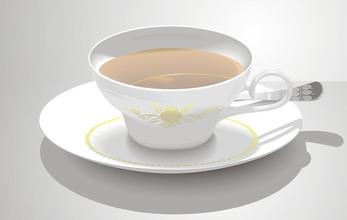Flavor characteristics of Yunnan small-grain Coffee introduction to varieties of Grinding Calibration by treatment method in Manor area
Flavor characteristics of Yunnan small-grain Coffee introduction to varieties of Grinding Calibration by treatment method in Manor area
Cutting materials with straight branches, can not use a branch, because a branch cuttings after the new plant can only grow creeping, can not grow into a straight coffee tree. Cuttings should be cut with green uncorked, fully aged leaves, robust straight terminal buds at the bottom of paragraphs 2-3, not semi-corked and corked straight branches. The leaves of cuttings are four inches wide (about 6-8 cm), and each section of cuttings is 4-6 cm long. The cuttings are cut into two pieces, each with a blade, and the cut is oblique and smooth.
The slotting machine generally uses a sand bed with a thickness of 40-50 cm, with coarse sand in the lower part and medium fine sand in the upper part. The shade degree of the slotting bed should be 80-90%. Wash the sand first when using it, or you can mix it with the coconut bran of 1 stroke 2. Using spray equipment, the rooting rate of cuttings is high, but the cost of equipment purchase is high.
The cuttings can be cut obliquely or directly, and the cutting depth is buried at the leaf node. 10-15 cm in a row, with the leaves not covering each other as the standard. Fully sprinkle with water after insertion to make the cuttings in close contact with the sand. After cutting, plastic film should be covered on the cutting bed to reduce water evaporation and improve the rooting rate of cuttings. When covering the plastic film, it should be arched with iron wire or bamboo, inserted on the edge of the sand bed, and then covered with the plastic film, and then pressed to maintain the humidity in the bed. If spray equipment is used, there is no need to cover plastic film Cymes with several clusters in leaf axils, each inflorescence with 2-5 flowers, without a total pedicel or with a very short total pedicel; flowers fragrant, with pedicels 0.5-1 mm long; bracts basally somewhat connate, dimorphic, of which 2 are broadly triangular, nearly equal in length and width, and the other 2 lanceolate, twice as long as wide, leaf-shaped. Calyx tube tubular, 2.5-3 mm long, calyx limb truncated or 5-denticulate; Corolla white, length varies from breed to breed, generally 10-18 mm long, apically often 5-lobed, rarely 4-or 6-lobed, lobes often longer than Corolla tube, tip often obtuse; anthers protruding from Corolla tube, 6-8 mm long; style 12-14 mm long, stigma 2-lobed, 3-4 mm long
After drinking the original, simple coffee, we approached what is known as the oldest coffee forest in China. At this time, the ancient coffee trees have produced clusters of coffee beans, although they will not mature until next month, but some of them will show bright red. Qi Fenghua said that this forest is considered to be the oldest ancient coffee forest in China. There are 1134 plants in 13 mu, 24 of which have a history of more than 100 years, which were introduced and planted by French missionaries when they built a church in Zhu Kula in 1892. Local Tan Jialin said: "the reason why the 13 mu ancient coffee forest in Zhukula area is listed as the oldest coffee forest in China is that it has 24 ancient coffee trees more than 100 years old, all of which are pure Yunnan small-grain coffee. Its superior quality is very rare. It is the ancestor of Chinese coffee, especially Yunnan small-grain coffee, and has extremely high scientific research value and industrial development value."
Yunnan has a long history of growing coffee and has a unique climate advantage. Yunnan small grain coffee has the characteristics of strong but not bitter, fragrant but not greasy, slightly sour and so on. According to the International Coffee Organization, Yunnan small-grain coffee is similar to Colombian small-grain coffee in quality, and its products are highly competitive in the market. At present, 95% of China's coffee raw materials are produced in Yunnan. Therefore, Yunnan's coffee industry has a far-reaching impact on the development of China's coffee industry.

Important Notice :
前街咖啡 FrontStreet Coffee has moved to new addredd:
FrontStreet Coffee Address: 315,Donghua East Road,GuangZhou
Tel:020 38364473
- Prev

Introduction to the taste production area of Yejia Fichel coffee bean flavor description method
Yega Ficher Cochel Coffee Bean Flavor description of Coffee Bean Flavor Variety Taste production area Yega Xuefei, nearly 2000 meters above sea level, is one of the highest coffee producing areas in the world. Here has been a wetland since ancient times, Yirga means to settle down, Cheffe means wetland, Lake Turkana, Lake Abaya, Lake Chamo bring rich water vapor here. To Fog Valley (Misty v)
- Next

Guatemalan coffee bean classification Guatemalan coffee flavor description characteristics Guatemalan coffee story
Guatemala coffee bean altitude classification flavor description method variety characteristics Guatemala is bordered by Mexico to the north, Honduras and El Salvador to the south, the Caribbean to the east and the Pacific Ocean to the west, with tropical rain forests, volcanic geology, plateau valleys and changeable micro-climate. Guatemalan coffee once enjoyed a reputation as the best quality coffee in the world.
Related
- Detailed explanation of Jadeite planting Land in Panamanian Jadeite Manor introduction to the grading system of Jadeite competitive bidding, Red bid, Green bid and Rose Summer
- Story of Coffee planting in Brenka region of Costa Rica Stonehenge Manor anaerobic heavy honey treatment of flavor mouth
- What's on the barrel of Blue Mountain Coffee beans?
- Can American coffee also pull flowers? How to use hot American style to pull out a good-looking pattern?
- Can you make a cold extract with coffee beans? What is the right proportion for cold-extracted coffee formula?
- Indonesian PWN Gold Mandrine Coffee Origin Features Flavor How to Chong? Mandolin coffee is American.
- A brief introduction to the flavor characteristics of Brazilian yellow bourbon coffee beans
- What is the effect of different water quality on the flavor of cold-extracted coffee? What kind of water is best for brewing coffee?
- Why do you think of Rose Summer whenever you mention Panamanian coffee?
- Introduction to the characteristics of authentic blue mountain coffee bean producing areas? What is the CIB Coffee Authority in Jamaica?

